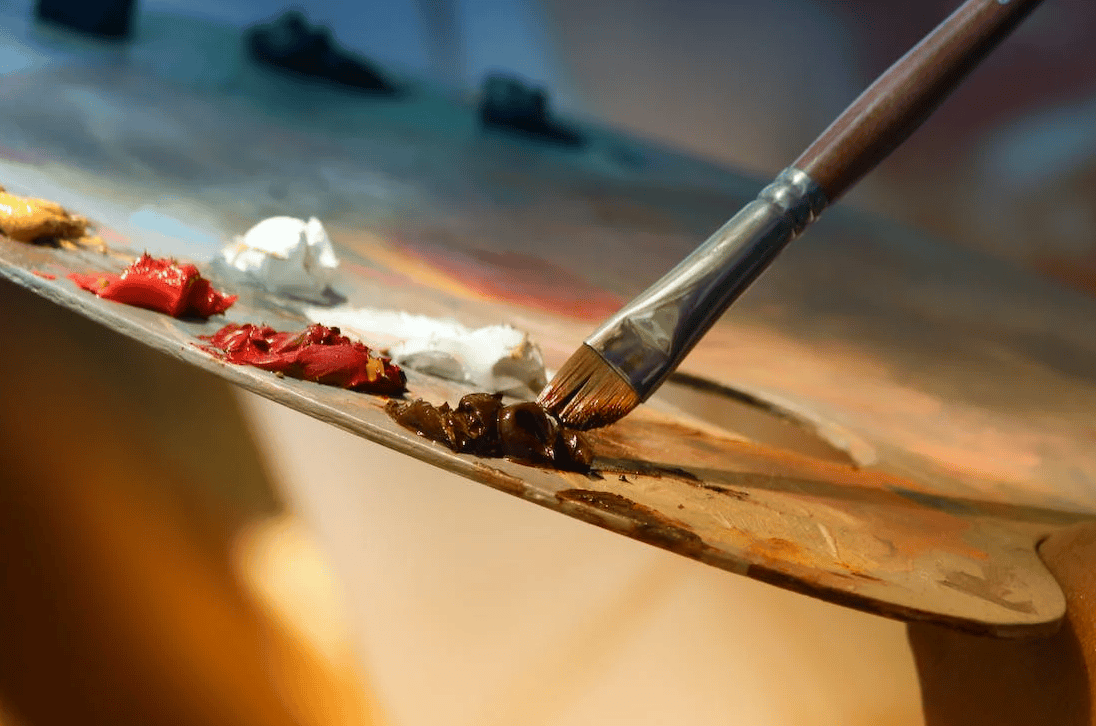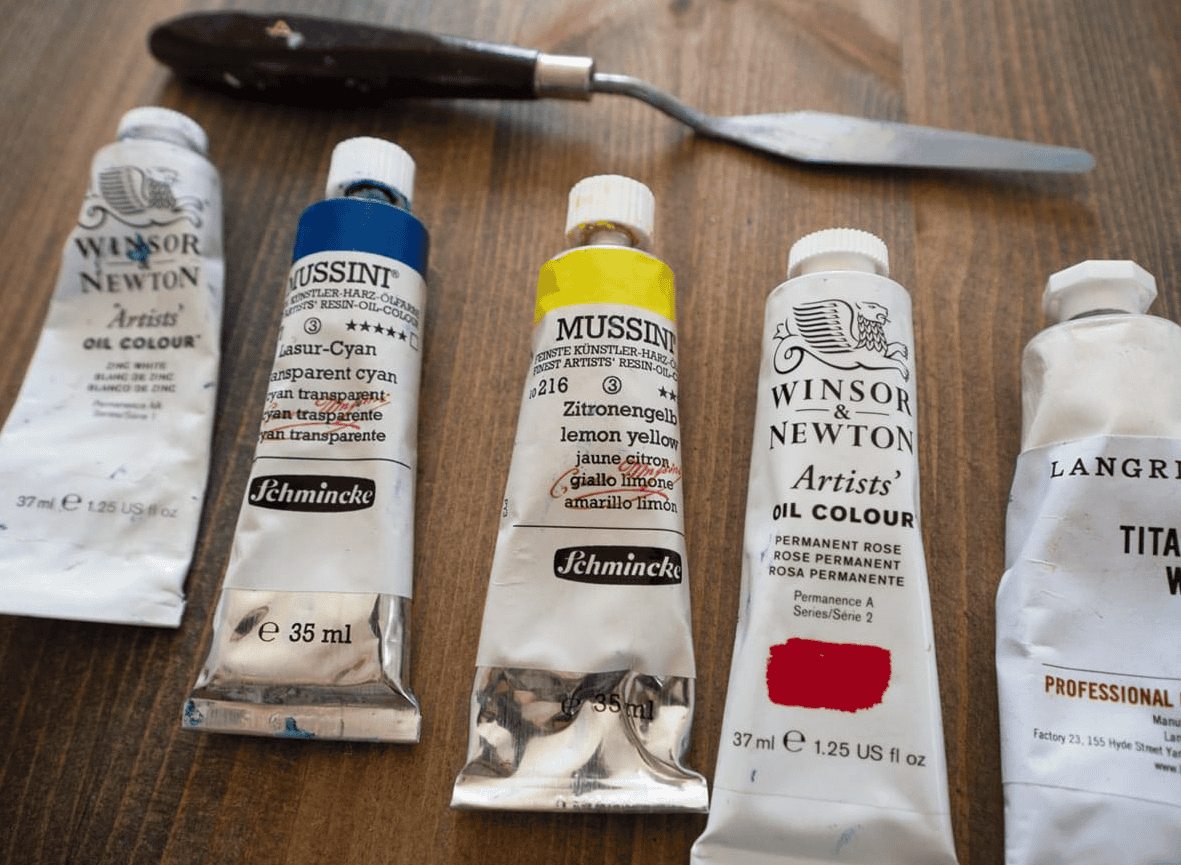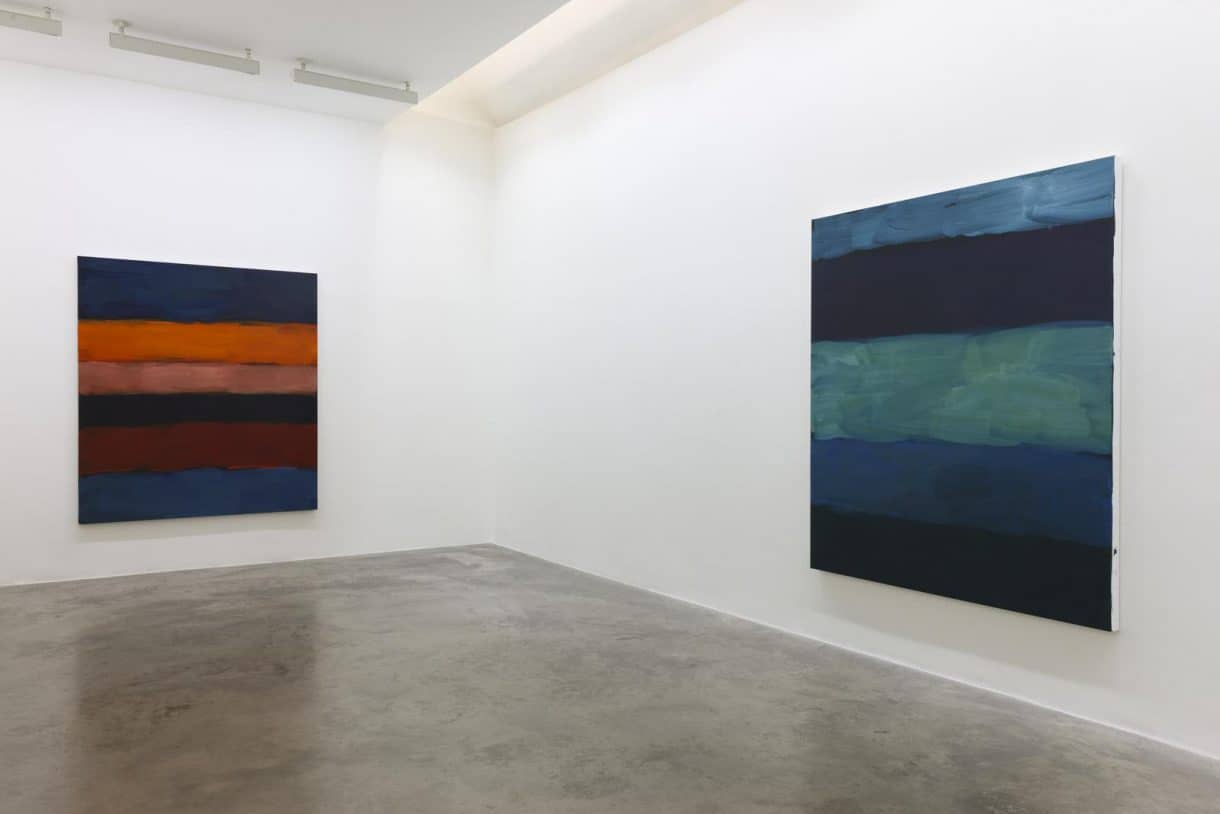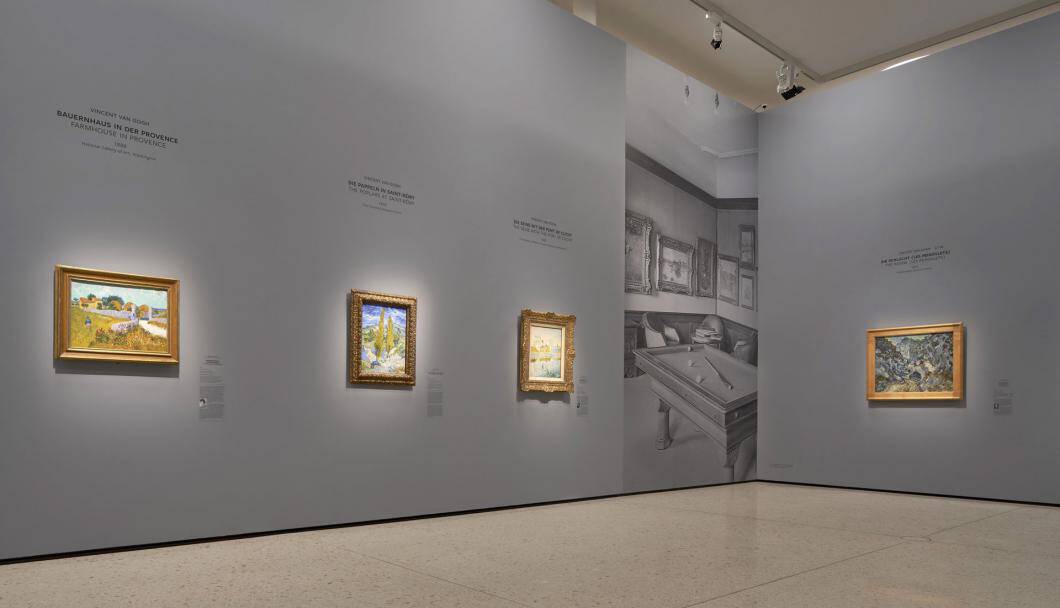When it comes to selecting colors for your limited palette, the possibilities are abundant. Your choice of colors will be influenced by the desired effect you wish to create, the subject matter of your artwork, and the medium you’re working with.
Utilizing a small yet diverse range of pigments in your paintings can offer numerous advantages to your artistic practice. By employing a limited palette, your artwork can exhibit a sense of organization and harmony that captivates the viewer.
Regardless of whether you work with oil painting, acrylics, watercolors, or any other medium, a limited palette allows you to skillfully mix a wide array of values and tones, unlocking endless possibilities for creative expression.
Unlocking the Power of a Limited Palette in Painting
Painting with a limited palette involves carefully selecting a minimal number of paint tubes to achieve a broad range of tones across the spectrum. It also entails choosing a precise quantity of pigments necessary to create colors that align with your artistic vision.
Typically, a limited palette consists of no more than six different colors, excluding white for tints and black or burnt umber for shades.
The specific pigments you choose for your palette will depend on the desired outcome of your artwork. For instance, if you aim to create muted tones with intense color contrasts, ideal for portraiture, the Anders Zorn palette featuring yellow ochre, blue-black, and light red could be an excellent choice.
Understanding the Significance of Primary Colors in Painting

In the realm of painting, the primary colors hold a crucial role. These pigments, in their purest form, consist of blue, red, and yellow, specifically known as cyan, magenta, and yellow.
However, relying solely on these three primaries limits the range of colors (gamut) that can be achieved. Many vibrant and deep hues remain outside the mixing capabilities of these pigments.
To overcome this limitation, many artists adopt a limited palette approach. They start with the primary colors and then expand their palette by incorporating additional colors that cannot be obtained through primary mixing alone, such as crimson.
In a six-color limited palette, each primary color is represented in both its warm and cool variations. This includes a warm blue leaning towards red, a cool blue leaning towards yellow, a cool red leaning towards blue, a warm red leaning towards yellow, a warm yellow leaning towards red, and a cool yellow leaning towards blue. By employing six pigments, artists utilize the fewest colors possible to create a broad range of hues. This enables them to achieve superior color contrasts compared to using fewer than six colors.
In this guide, all the listed palettes feature a dominant hue of a primary color, be it blue, red, or yellow. This selection facilitates the creation of contrasts in hue, shade, and temperature. For instance, the Anders Zorn palette consists of vermilion (red hue), ivory black (blue hue), and yellow ochre (yellow hue).
Benefits of a Limited Primary Color Palette
When aiming for realism in your artwork, opting for the six-color limited palette can prove highly advantageous. It offers a versatile range of colors that enable you to capture lifelike representations effectively. Additionally, this palette suits artists who enjoy experimenting with vibrant color variations and wish to avoid any constraints on their creative choices.
However, many artists prefer a more reductive approach, working with a smaller and more restricted color wheel. This allows them to focus on conveying mood and emotion rather than striving for realistic color representation. By utilizing alternative limited color palettes, artists can harmonize different areas of their artwork that might otherwise appear disjointed.
Regardless of the chosen palette, warm and cool tones are essential to create contrast in your painting. While the colors may not precisely match the real-life appearance of the subject, they can still evoke a similar impact. Instead, artists rely on value, the lightness or darkness of a color, to emphasize the structure and form of their artwork. This approach offers the freedom to be creative with the palette choice while maintaining the definition and visual impact of the subject.
Advantages of a Limited Palette in Painting
Discover the compelling reasons to embrace a limited palette in your artistic endeavors:
- Create Harmonious Color Combinations:
Using a limited palette allows you to produce stunningly harmonious paintings. With fewer pigments at play, the colors seamlessly blend together, forming a visually cohesive composition. By employing contrasting colors on your palette, you can even neutralize disparate sections, establishing a strong visual relationship throughout your artwork. The limited palette encourages the exploration of subtle color graduations and nuanced variations.
- Cut Art Supply Costs:
One practical benefit of working with fewer paints is the cost-saving advantage. With a limited palette, you not only spend less on art supplies but also require less space to store your tubes. If you aspire to paint in plein air or venture outdoors, the compact nature of a limited palette makes it more convenient to carry in your bag.
- Improve Color Mixing Skills:
Using a limited palette enhances your ability to mix colors effectively. With a restricted set of pigments, you embark on a valuable training exercise, deepening your understanding of color theory and the relationships between different hues and values. By manually mixing various tones and hues, you gain insight into composition planning and meticulous consideration of each tone and value transition. This approach empowers you to create custom colors instead of settling for pre-manufactured tubes, further honing your color-matching skills. Moreover, the act of manually mixing colors transforms your perception of the world around you, heightening your sensitivity to the nuances of color.
- Personalize Your Palette:
An artist’s palette is a personal reflection of their practice and style. Experienced artists often begin with a standard limited palette to learn the art of color mixing and subsequently tailor their palette to suit their unique preferences. As your skills develop, you can explore different color options and modify your palette accordingly, establishing a signature set of colors that resonate with your artistic vision.
Examples of Limited Palettes
The selection of colors for a limited palette can vary depending on your chosen medium, subject, and desired effect. However, there are a few key colors that are commonly used across different palettes. Additionally, the addition of white and burnt umber or black is crucial for creating a range of values. Here are some essential colors to consider:

- Titanium White or Zinc White:
Titanium white is opaque and possesses strong covering power. It is excellent for creating highlights with significant impact. Zinc white, on the other hand, is translucent and less likely to make colors appear “chalky” when used on its own. Combining the two can result in more balanced highlights.
- Burnt Umber:
Burnt umber is often preferred over ivory black by many artists. This earth pigment has reddish and yellow undertones and can be mixed with ultramarine blue to create a deep, intense black. It is useful for creating warm or cool shadows by adjusting the ratio of burnt umber or ultramarine blue. Additionally, burnt umber offers more transparency, making it suitable for creating transparent and fast-drying shadows as part of the initial paint layer.
- Ivory Black:
Ivory black is commonly used in palettes like the Anders Zorn palette or cool monochromatic palettes. It has cool, bluish undertones and serves as a solid, cool black. However, modifying the color profile of ivory black without darkening it can be challenging. In contrast, burnt umber allows for more flexibility in modification. While ivory black is suitable for cool blacks or as a neutral blue in certain palettes, it can sometimes make colors appear dull compared to burnt umber.
Exploring the Split Primary Limited Palette in Oil Paint
One of the most widely used limited palettes in oil painting is the split primary palette. It offers a broad range of hues and allows for high chroma and vibrant color contrasts. This palette involves using both warm and cool versions of each primary color. Here are the key colors typically included in this palette:
- Quinacridone Magenta (PV19):
This primary magenta color is cool in form but can be mixed to create vibrant oranges. It adds depth and intensity to your paintings, especially when combined with other colors.
- Cadmium Red Light (PR108):
This deep red leans towards yellow and has a more rounded quality in mixtures. It can be substituted with Pyrrole red if desired. Cadmium Red Light is excellent for creating warm tones and is a versatile color for a wide range of subjects.
- Phthalo Blue (PB15):
As a primary cyan color, Phthalo Blue mixes to produce vibrant greens. It is highly intense and can add richness to your paintings. This color provides a cool tone and is essential for achieving a balanced color range.
- Ultramarine Blue (PB29):
Ultramarine Blue is a blue pigment that leans towards violet. It is a versatile color with a rich depth, ideal for creating a wide range of cool tones and subtle variations.
- Transparent Yellow (PY128):
Transparent Yellow serves as the primary yellow in this split primary palette. It offers transparency and can be used to create bright, luminous colors when mixed with other pigments. This color is particularly useful for glazing techniques.
- Cadmium Yellow (PY35) or Hansa Yellow:
Cadmium Yellow is a deep, rounded yellow that provides warmth and richness. Alternatively, you can substitute it with Hansa Yellow from M. Graham. Both options work well in achieving a wide range of warm tones and mixing vibrant yellows.
Painting with a Three-Color Oil Palette: Tips and Techniques
When it comes to painting with a limited palette of three colors in oil, it’s important to acknowledge that the concept of using only true primary colors is not flawless. While there are no pigments that perfectly align with the primary colors on the color wheel, it doesn’t mean we can’t create beautiful artwork using this approach.
One thing to keep in mind when working with just three colors is that you may not be able to mix them to achieve every color imaginable. Certain shades, such as vibrant oranges and purples, might not appear as saturated as you desire. However, there are pigment combinations that come close to replicating these hues.
Another drawback of the three-color palette is the need for extensive mixing to achieve specific colors. This means you’ll have to experiment and blend the colors together to achieve the desired shades and tones.
However, the key to choosing a limited palette for your painting practice is not solely focused on using colors that resemble true primary colors. Instead, it’s about finding colors that best suit your artistic vision and the outcome you wish to achieve. Different combinations of primary colors can yield equally captivating results, regardless of their proximity to true primaries. So, prioritize what will make your painting impactful rather than fixating on the colors that are closest to being primary.
It’s worth noting that the primary triad palette typically produces high-chroma colors. If you’re seeking a palette with more harmonious colors, you may want to explore the landscape or portrait sections, as they offer alternative color combinations that can achieve the desired effect.
The Primary Triad Palette
- Transparent Yellow PY128:
When mixed with reds or blues, this transparent yellow pigment produces a vibrant mid-yellow shade. It excels in creating clean color mixes and lives up to its name by maintaining its transparent properties.
- Quinacridone Magenta PV19:
Considered the primary red color in this palette, quinacridone magenta is an incredibly versatile pigment. It has the ability to produce vibrant oranges and equally captivating purples. In its pure form, it leans towards the blue side of the color spectrum. Additionally, when applied as a glaze over white, it can create vivid pinks.
- Phthalo Blue (primary cyan) PB15:
Known for its high covering power, phthalo blue takes on the role of the primary cyan in this palette. It is a mid-value blue that adds depth and richness to your artwork.
A Study in Warm and Cool Pigments
Prepare to be amazed by the remarkable versatility of a specific palette consisting of one warm and one cool color. Both pigments exhibit a dark appearance in their purest forms, yet possess the desirable quality of transparency.
With this palette, you have the power to create rich values and achieve tonal variations that beautifully simulate color and depth in your artwork.
While the possibilities are endless when it comes to selecting cool and warm pigments, there are three recommended palettes that consistently yield impressive results:
- Palette 1:
- Burnt sienna;
- Ultramarine;
- White.
- Palette 2:
- Burnt Umber;
- Ultramarine;
- White.
- Palette 3:
- Viridian Green;
- Alizarin Crimson;
- White.
World of Monochromatic Painting
Delve into the realm of monochromatic art with a limited palette consisting of burnt umber, ultramarine, and white. By utilizing these three colors, you can achieve stunning monochromatic effects in your artwork.
When working with a monochromatic palette, you have the flexibility to select any single pigment and pair it with black or burnt umber to create a wide range of values. This allows for a diverse tonal spectrum in your paintings.
Limited Palette for Portrait Painting
Creating lifelike skin tones in portrait painting can be challenging, especially for beginners who often struggle with oversaturated tones. As a helpful tip, it’s advisable to make the tones much duller than initially anticipated.
Inexperienced painters may attempt to use vibrant red pigments directly on cheeks or lips, resulting in an artificial appearance. To achieve softer and more natural skin tones, a specific palette can be employed as a solid foundation, with darker neutrals used to tone down the colors.
For portrait painting, a muted color palette works best. By incorporating a muted red, muted yellow, and two additional pigments to balance and soften the colors, remarkable results can be achieved.
Portrait Palette:
- Yellow Ochre:
Yellow ochre, when mixed with titanium white and cadmium red, serves as an excellent base tone for skin.
- Raw Umber:
With its blue-yellow undertones, raw umber can be utilized to cool down the mixture and add depth to shadows in the artwork.
- Cadmium Red:
This pigment can be mixed with titanium white and other neutralizing colors to create highlights and accents.
- Ivory Black:
By mixing ivory black with titanium white, a neutral blue shade can be achieved. This combination is ideal for neutralizing tones in lips and other vibrant areas of the skin.
Alternatively, an alternative palette can be employed to create a softer effect using muted colors:
- Naples Yellow:
A warm and intense yellow pigment that surpasses the earthy tones of yellow ochre.
- Vermilion:
A vibrant orange-red hue, perfect for capturing lip colors. It can also be added to brown tones to introduce warmth.
- Titanium White:
The reliable and versatile white pigment complements the muted color palette.
The Unique Palette of Anders Zorn
Renowned Swedish artist Anders Zorn was known for his exceptional ability to create vibrant and pure color mixes with a remarkably limited palette. Despite his palette lacking vivid hues, Zorn achieved remarkable results by carefully selecting just a few colors. His palette consisted of:
- Yellow Ochre;
- Ivory Black;
- Vermilion;
- Titanium White.
Zorn’s palette choice is evident in his famous paintings, where he skillfully demonstrates the power of these selected colors.
Limited Palette for Seascape Paintings
As an artist who primarily focuses on seascapes, I often opt for the primary triad palette. However, there are instances where I incorporate Cobalt Blue for the sky or utilize Ultramarine to achieve more intense violet-blues. You can explore some of my seascape paintings for reference.
For those interested in an alternative seascape palette, consider the following:
- Transparent Yellow
This primary yellow pigment mixes harmoniously with cyan, allowing for the creation of captivating turquoises and teals.
- Cadmium Yellow Light
With color coordinates leaning towards green, this variation of cadmium yellow is perfect for achieving sharp and clear greens when combined with the blues in this palette.
- Alizarin Crimson
When mixed with blues, this color produces exquisite violet blues and violet blue-greys, making it an excellent choice for sunset sea paintings.
- Cadmium Red Light
Mixing this pigment with yellow results in a muted orange shade that effectively neutralizes blues, thus creating a blue-grey palette.
- Phthalo Blue
Arguably the most crucial color for seascapes, Phthalo Blue will be your go-to hue for various elements in your artwork.
- Ultramarine Blue
By closely observing the sea, you’ll notice that light often plays upon it, imbuing it with purple undertones, particularly in deeper waters.
- Ivory Black
In comparison to burnt umber, Ivory Black proves more effective when mixed with and darkening blues. Additionally, it helps in creating a range of muted blues.
Unleashing the Beauty of Limited Palettes in Landscape Painting
When it comes to landscape painting, your palette selection will depend on the specific landscapes and seasons you wish to capture. If you find yourself immersed in plein air painting during the summer, it’s essential to have colors that allow you to depict a variety of vibrant greens and bright flowers. In landscape painting, black is generally unnecessary, but burnt umber can help you achieve muted and earthy tones. Here, we present a limited palette tailored for landscapes:
- Cadmium Yellow:
This slightly warm pigment exhibits a medium value akin to the color of butter. It works wonders for portraying summer flowers, fields of hay, and generating a sense of warmth in your artwork.
- Transparent Yellow:
Use this color to create a multitude of shades in foliage. With its transparency, it delivers a clean and vibrant masstone, as well as brightness in tint.
- Cadmium Red:
Reserved for warm sunsets and vibrant flowers, red is not a critical color in landscape painting. However, you can substitute other reds like Quinacridone Magenta or Vermilion if needed.
- Alizarin Crimson:
As a transparent red that leans towards the blue spectrum, Alizarin Crimson is particularly effective in neutralizing greens in foliage or enhancing shadows in your landscape compositions.
- Cobalt:
This slightly cool blue is an excellent choice for capturing skies, snow scenes, and lakes with its subtle brilliance.
- Ultramarine:
With its warm undertones, Ultramarine is ideal for creating dark and greyish-green shades. It also lends itself well to deep lake scenes or intensely blue skies.
For those seeking additional options to facilitate mixing greens and deep earthy reds in their landscape paintings, consider these optional extras:
- Burnt Sienna:
A staple for desert painters, Burnt Sienna works wonderfully in autumn scenes, forestry, and can even serve as an imprimatura for various subjects. It’s an incredibly vibrant earth pigment that can also serve as a substitute for red.
- Sap Green:
This deep, earthy, and mossy transparent green leans towards yellow. While you can mix this color using your base palette, having a premixed tube of Sap Green can prove helpful during your painting process.
- Yellow Ochre:
This beautiful pigment shines in golden sunsets and autumn landscapes, adding a touch of warmth to your compositions.
The Power of Limited Palettes in Landscape Painting
In this captivating gouache landscape painting, I ventured into the realm of limited palettes, utilizing just five colors in addition to ivory black, and white. To bring to life the golden grasses, rocky mountains, lush green bushes, and vibrant blue sky, I employed yellow ochre, viridian green, burnt umber, ultramarine, and cyan (alongside ivory black and titanium white). These colors are readily available in the Winsor & Newton gouache introductory set, but to fully embrace this palette, it is recommended to add individual tubes of titanium white and burnt umber. In the accompanying video tutorial, I delve into the various color-mixing techniques employed during the process.
Inspired by Monet’s Impressionist Palette
Claude Monet’s artwork is renowned for its brilliant colors and luminosity. He had a remarkable ability to perceive the subtle tones within the interplay of light and shadows in a landscape, which he then emphasized through vibrant color mixes. Monet’s achievement of vibrant hues can largely be attributed to his preference for a limited palette, allowing him to mix the fewest pigments together to achieve specific tones.
Monet’s palette typically included:
- Cadmium Yellow Light (cool);
- Cadmium Yellow Medium (warm);
- Alizarin Crimson (cool and transparent);
- Cadmium Red Light (warm);
- French Ultramarine (cool);
- Flake White.
Furthermore, it is suggested in James Heard’s book “Paint Like Monet” that Monet might have incorporated secondary green pigments, such as Viridian, to facilitate the mixing process in certain landscape pieces.
Exploring the Special Qualities of Extra Pigments
Certain pigments possess unique qualities that allow artists to achieve effects that cannot be easily replicated by mixing colors. In the context of a warm and cool palette consisting of six colors, you might find yourself lacking a suitable transparent deep red for glazing purposes. In such cases, incorporating a pigment like alizarin crimson can provide the desired effect.
The transparency, drying time, and even the binder used in pigments can significantly influence their usability and desirability in different artistic applications.
While many artists have gained fame for their mastery of limited palettes, such as Anders Zorn, it is important to recognize that their artistic practice was not always confined to such restrictions.
Evidence suggests that Zorn, as reported by the Museum Director of the Zorn Collection in Mora, Sweden, utilized a diverse range of colors throughout his painting career. Tubes of cobalt blue were discovered in his studio, and in certain paintings, it is evident that he employed a mixture of different blues and greens.
Therefore, while Zorn may have adhered to his limited palette for certain works, he also ventured beyond those boundaries on occasion.
Ultimately, the key is to experiment and discover what works best for your artistic practice, embracing the opportunity for exploration and, above all, enjoying the creative process.
FAQ
A limited palette refers to using a restricted number of colors in a painting, typically fewer than the complete range of available pigments.
A limited palette is often called a “restricted palette” or a “reduced palette”.
The limited color palette technique involves intentionally choosing a small number of colors to create a harmonious and cohesive visual effect in a painting.
The advantages of a limited color palette include creating color harmony, simplifying color mixing, enhancing unity in a painting, and allowing artists to focus on value, composition, and other elements of their work.





